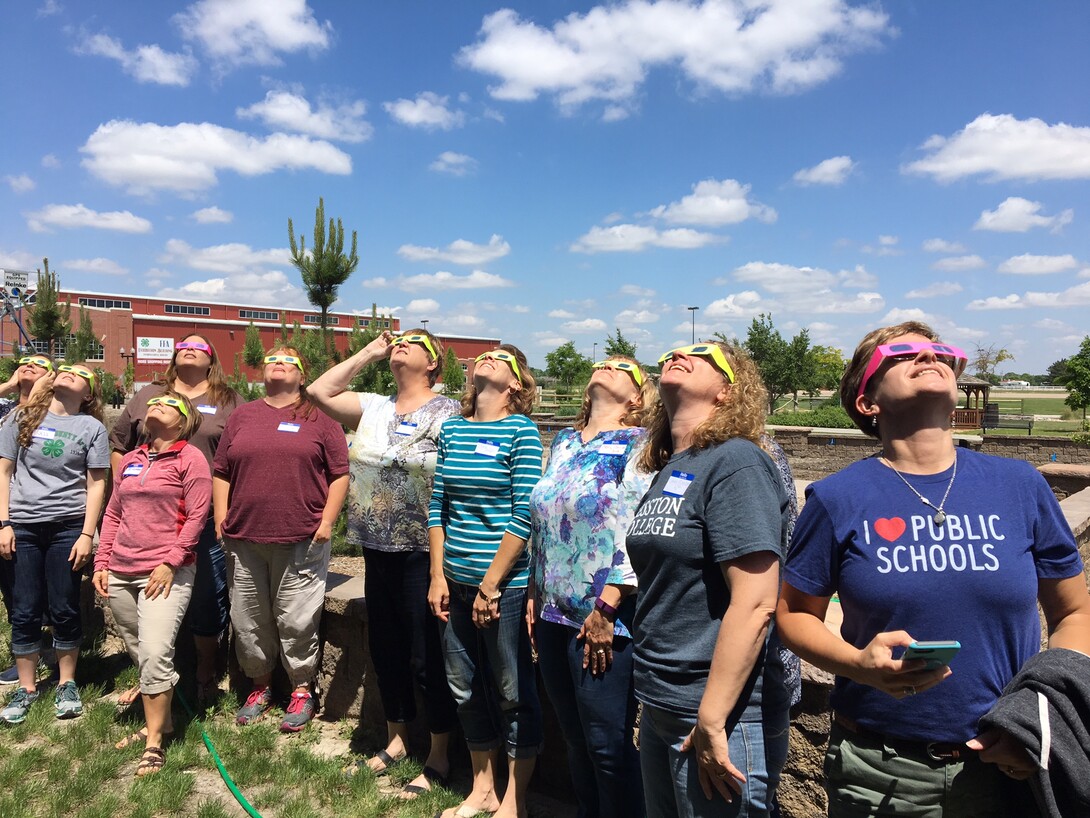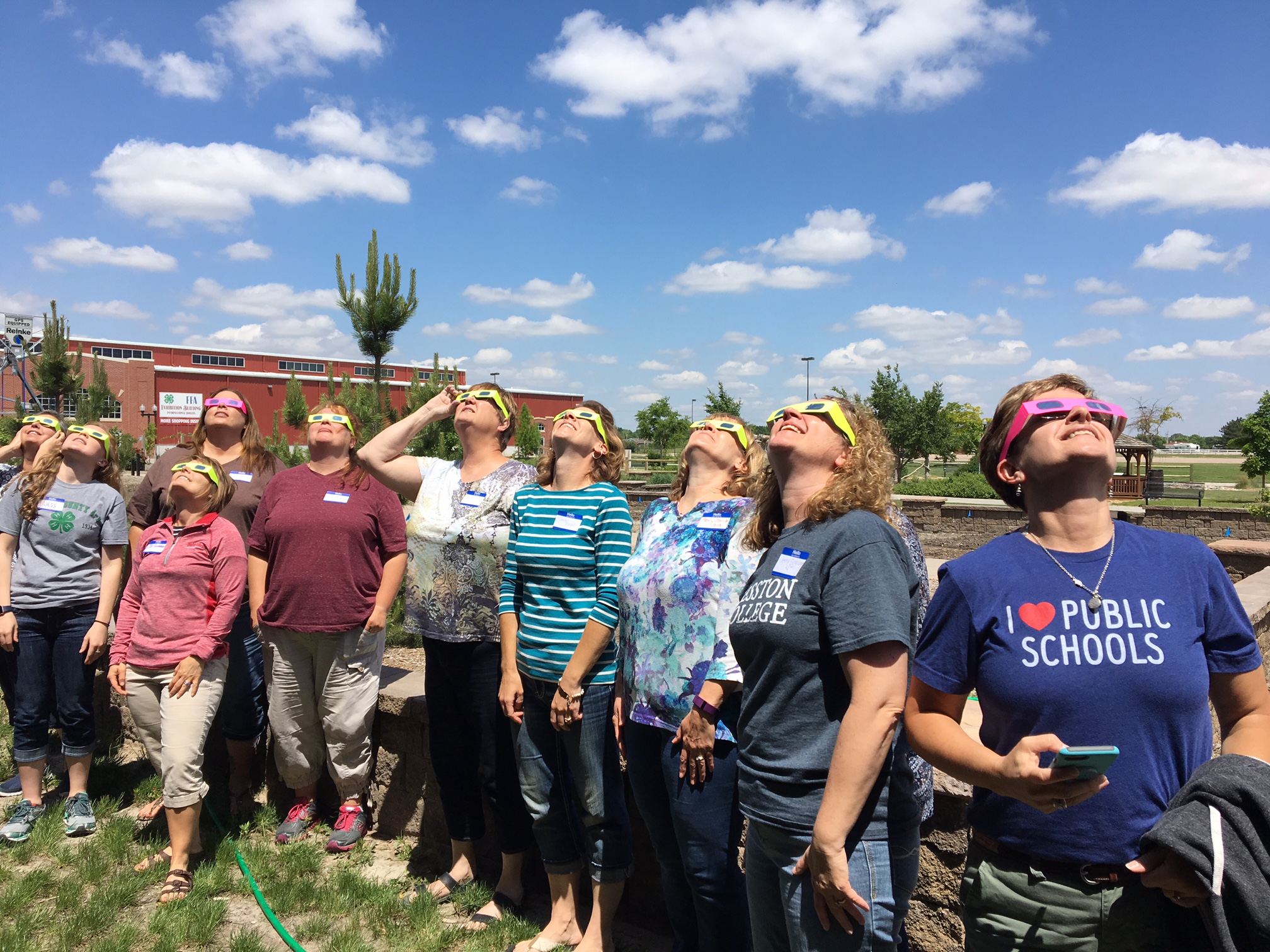
On Aug. 21, the United States will experience its first total solar eclipse in 38 years. Nebraska Extension is helping Nebraska educators get their students enthused for this rare event through a series of solar eclipse trainings offered this summer.
Nebraska Extension and Raising Nebraska are partnering with the Hastings Museum to offer solar eclipse training for teachers and youth professionals. The training provides participants with resources and lesson plans that they can use in their classroom, after-school setting or organization. The first training was held at Raising Nebraska on June 1. Participants included public school teachers, homeschool teachers, 4-H volunteers and after-school educators.
“Nebraska’s wide-open spaces will be one of the best places in the country to view the eclipse, so we want to help youth professionals capitalize on this exciting teaching opportunity,” said Beth Janning, Science and Agriculture in Action educator at Raising Nebraska.
During the eclipse, the moon’s umbral shadow will move across the United States, from Oregon to South Carolina, in a little over 90 minutes. Over 200 Nebraska communities fall within the path of totality, or the path of the shadow where observers will see the moon completely cover the sun for roughly two and a half minutes. Raising Nebraska’s home in Grand Island will experience near maximum totality during the eclipse, which will last roughly two minutes and 20 seconds.
Wanda Marget, a librarian from Fairmont, said she felt it was important to attend the training so she can help students safely experience the unique event.
“Rare events like a total solar eclipse can really drive youth’s interest in exploring the solar system and science. It could potentially help them discover a new career path so we need to be ready to support their learning,” Marget said.
The training covered what a solar eclipse is and how to view the eclipse safely. Educators learned that during the window of time that the moon completely covers the disc of the sun, or the total solar eclipse, it is safe to view with the naked eye. However, during the partial phases of an eclipse, special eye protection is required.
Opportunities to incorporate eclipse-related curriculum after Aug. 21 was also incorporated into the training. Special sessions were held on the topics of plant science, animals and the sun. Educators were provided with training and resources to teach youth about the importance of light to plants, nocturnal animals, the layers of the sun and how sun dials work.
The total solar eclipse is also an opportunity for Nebraskans to become citizen scientists. Janning shared resources with the training participants that will allow their classrooms and youth groups to track the temperature before, during and after the eclipse. Raising Nebraska is working with IANR Media to develop a portal for citizen scientists to record their temperatures. This data will later be shared with NASA.
The training is an outcome of Nebraska Extension’s team focused on careers in science, technology, engineering and mathematics, or STEM. Research shows that STEM-related careers are expected to increase 13 percent by 2022. The team is focused on engaging youth in rigorous hands-on learning activities, in or out of school.
Remaining training sessions are listed below. The trainings are from 2 to 4 p.m. Dates and locations are:
> June 15, 9 to 11 a.m.: Hastings Museum, 1330 N. Burlington Ave., Hastings?
> June 18, 2 to 4 p.m.: Raising Nebraska
> July 27, 2 to 4 p.m.: Training via Zoom video conference
To register for the June 15 training, call 402-461-2339. To register for all other trainings, go to http://go.unl.edu/jkfz. Space is limited.
For more information, contact Janning at 308-385-3967 or raisingnebraska@unl.edu.








